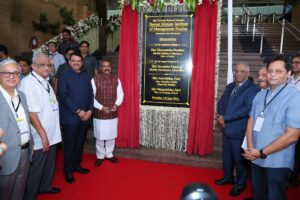
Former Chief Economic Adviser Arvind Subramanian has said that India’s GDP growth estimate has been exaggerated by around 2.5 percentage points between 2011-12 and 2016-17, the year transitioning the UPA to NDA governments. The controversy over the country’s economic growth under the new GDP series unfolded as Subramanian in his recent research paper published at Harvard University pegged actual GDP growth at around 4.5 per cent. This opposed the official estimates of nearly 7 per cent growth during the said period.
This paper shows that this change has led to a significant overestimation of growth. Official estimates place annual average GDP growth between 2011-12 and 2016-17 at about 7 percent. One estimate that actual growth may have been about 4.5 percent with a 95 percent confidence interval of 3.5 – 5.5 percent, Subramanian says in the paper.
Manufacturing is one such sector where the calculations have been largely mismeasured. Lending further credence to the evidence, part of the overestimation can be related to a key methodological change, which affected the measurement of the formal manufacturing sector, he adds.
In the period before 2011, manufacturing value added in the national accounts used to be closely connected with the manufacturing component of the Index of Industrial Production (IIP) and manufacturing exports. However, this link according to Subramanian has broken down.
The former CEA’s analysis is based upon 17 key economic indicators for the period 2001-02 to 2017-18 with a higher interdependence with the GDP growth. Meanwhile, the deduction in the paper would not comprise the controversial MCA-21 database which is an innate component of the CSO’s computation.
Subramanian however, has asserted that his findings have key implications. The Indian policy automobile has been navigated with a faulty, possibly broken, speedometer, he says in the report.
The Ex-CEA has provided remedial ways to improve India’s growth performance. The entire national income accounts estimation should be revisited, harnessing new opportunities created by the Goods and Services Tax to significantly improve it; and restoring growth should be the urgent priority for the new government, Subramanian states in the paper.



